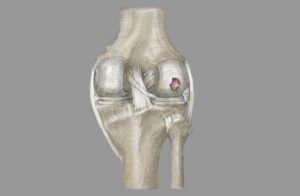The process of actively including individuals in their healthcare is called patient engagement. This involves cooperating with healthcare practitioners, managing oneself, and sharing decision-making. Value-based healthcare, which aims to lower costs while enhancing quality of care, heavily relies on patient engagement. Engaged patients actively participate in their treatment and recovery and get involved with their care.
The Importance of Patient Engagement:
One may wonder why patient engagement matters. The solution is easy to understand. A patient actively participating in their care is more than just a patient. They are more likely to report improved health results, accept accountability for their health, and adhere to treatment recommendations. Patient engagement reduces healthcare costs because engaged people use fewer resources. Additionally, they typically have excellent patient satisfaction rates, which can boost a medical practice’s standing and profitability.
The Benefits of Patient Engagement:
There are the most essential benefits of patient engagement.
1) Minimizes the need for emergency care visits:
Patients who collaborate with their healthcare professionals are more likely to be proactive in identifying warning signs associated with their condition. According to research, engaged patients have a 30% lower chance of returning to the hospital after being discharged.
2) Minimizes healthcare costs:
Regular cooperation between the physician and patient is more likely when the patient is actively involved in their care. They will use preventive strategies to manage well-being and reduce the need for emergency medical care.
3) More responsibility:
Better access to health information through patient engagement will motivate individuals to take charge of their health.
4) 24-hour access:
People will benefit from having information available at all times and places, making it even more convenient.
5) Better care and better outcomes:
Patients’ and caregivers’ comprehension grows when they access their clinical and health data, treatment information, and decision-making tools. They are more equipped to take part in their care.
6) Enhances client satisfaction and retention:
Patients feel acknowledged and appreciated When they take part in their own care. As a result, individuals become more active in their care, are happy with the services they get, and are inclined to remain with a healthcare professional.
7) PPR (Potentially Preventable Readmissions) are reduced:
Disengaged patients from the hospital have a higher chance of being readmitted within 30 days of discharge because they do not adhere to aftercare guidelines.
8) Enhanced revenue:
Patients who receive regular wellness checkups, tests, scans, and other procedures will be more engaged. The routine examination will aid in the early diagnosis of sickness. When patients are actively involved in their care, they will be eager to receive the prescribed treatments from their specific provider on schedule.
9) Increased compliance with healthcare plans:
As a result of technological improvements, scheduling appointments online and getting rapid clarification on questions are now simpler for consumers. This will result in more people adhering to their healthcare plans and making regular doctor visits.
10) Better communication:
Technology facilitates quicker and easier communication and collaboration between patients and providers. These creative tools offer a way for both parties to make decisions together and make communicating updates easier. Better care, results, and patient satisfaction correlate with enhanced communication.
Strategies to Improve Patient Engagement:
Here are ten patient engagement strategies in healthcare that can help improve health outcomes.
1) Engage Patients Automatically:
Active and meaningful patient interaction takes much time, even with only one patient. Use technology to automate patient involvement rather than handling each interaction by hand.
2) Collaborative decision-making:
Sharing decision-making responsibilities, including selecting a course of treatment, can also enhance patient-provider communication and lead to better results since patients are more likely to follow through on treatment plans when participating in the decision-making process.
3) Patient Education:
Multimedia resources, such as interactive tests and videos, can be used effectively in patient education to engage patients and give them a better understanding of their health conditions.
4) Engagement facilitated by technology:
Patients’ involvement in their care can be significantly increased by using technology, such as patient portals and mobile health apps, to communicate with them and access their health information.
5) Team-oriented medical treatment:
Active involvement and a sense of collaboration in their treatment can be promoted by integrating patients into care teams and providing them with opportunities to interact with members of their healthcare team.
6) Individualized treatment programs:
Creating care plans ensures they receive the treatment that best suits their needs, patients’ goals, preferences, cultural backgrounds, and particular medical conditions.
7) Patient-provider interaction:
Enhancing patient participation and fostering a better knowledge of treatment goals can be achieved by improving communication between patients and their healthcare professionals.
8) Self-awareness and self-control:
Vital sign monitoring, medication management, and symptom tracking are examples of self-monitoring. Self-management programs can also assist individuals in gaining the abilities and understanding necessary to manage their medical problems successfully.
9) Patient empowerment:
This empowerment includes resources and tools to assist patients in managing their health conditions, support from peers and healthcare professionals, and access to health information.
Also Read:
- Enhancing the Visibility of Your Medical Billing Practice
- Leverage the Strength of Patient Reviews to Enhance Your Practice
10) Community-based strategies:
Promoting patient participation in community-based activities, including peer-led initiatives or support groups, can improve health outcomes and increase patient interest.









